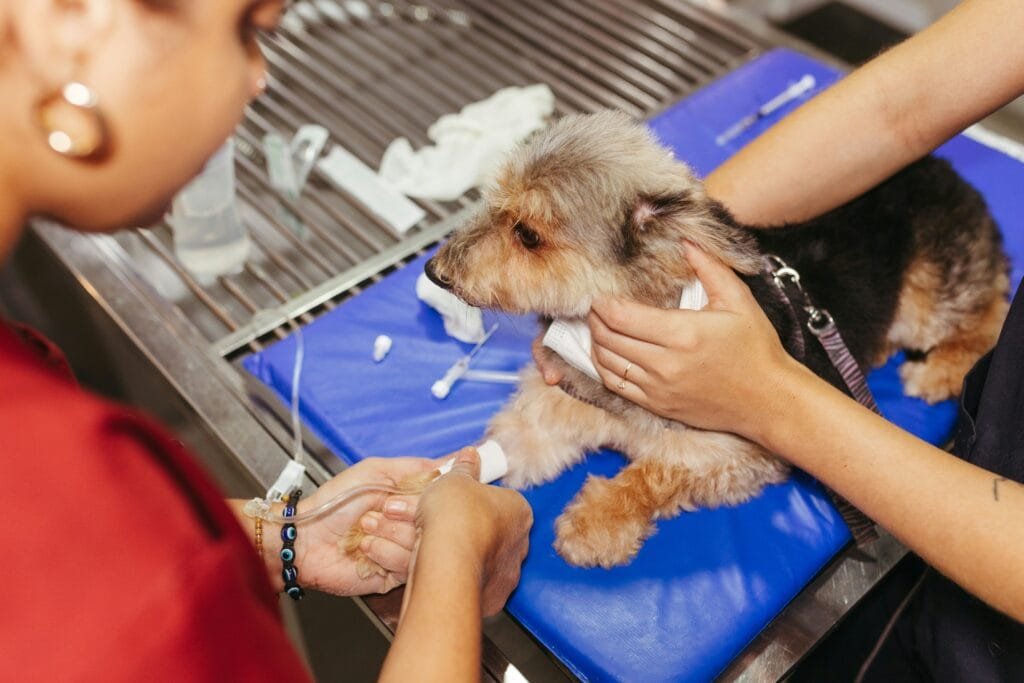The significance of veterinary technicians in your pet’s care.
Decades ago, most veterinary practices operated as single-doctor clinics. Veterinarians, often the owners, managed everything from answering phones and administering vaccinations to performing surgeries and life-saving CPR. Since then, the quality of veterinary medicine—and the expectations of pet owners—has evolved significantly. Demand for veterinary services has increased, resulting in more patients per veterinarian. To meet this demand while maintaining high standards of care, Registered Veterinary Technicians (RVTs) have become essential members of the veterinary team.

Yet, many pet owners are still unfamiliar with the role of RVTs in their pet’s overall care. If you’ve ever been in a veterinary hospital, you’ve likely interacted with an RVT—even if you didn’t realize it. They are the professionals collecting your pet’s bloodwork, assisting in surgery, monitoring anesthesia, and ensuring your pet receives the best nursing care while hospitalized. But their role goes beyond technical skills; they also provide comfort and compassion, helping both pets and their owners through stressful situations.
The first Animal Health Technology program in Canada was established in 1967. In Ontario, the Ontario Association of Veterinary Technicians (OAVT) was officially recognized and regulated through the OAVT Act in 1993. More recently, in 2017, the title of Registered Veterinary Technician became nationally recognized across Canada. Given the relatively recent formal recognition of the profession, it’s understandable that some pet owners may not fully grasp how crucial RVTs are to their pet’s healthcare.
Becoming an RVT requires completing a two-year college program, passing the Veterinary Technician National Exam (VTNE), and maintaining registered status through continuing education credits every two years. This ensures RVTs stay current with advancements in veterinary medicine and maintain professional liability insurance, similar to veterinarians.
Many RVTs go even further, specializing in areas such as anesthesia, canine rehabilitation, dentistry, and more. In small animal practices, RVTs perform many hands-on tasks, from collecting blood and urine samples to performing diagnostic imaging like X-rays and ultrasounds. They provide nursing care for hospitalized pets, prepare for surgeries, place IV catheters, and monitor anesthesia—combining multiple human-nursing specialty equivalents into one role. If you think of the healthcare system for humans, an RVT takes on responsibilities similar to those of a nurse, radiology technician, anesthesiologist, and dental hygienist all at once. Their knowledge spans multiple disciplines, making them an invaluable part of your pet’s healthcare team.
The role of RVTs in veterinary hospitals across Canada, the U.S., and worldwide is evolving to meet increasing demand and changing expectations. They are no longer just assisting veterinarians; they are integral to the patient care team. This author has worked alongside RVTs who have found tumors during routine exams, advocated for patient pain control and comfort during hospitalization, and supported clients through some of their most difficult days.
As demand rises and the supply of veterinarians decreases, the industry increasingly relies on RVTs to support hospitals in new ways. Many RVTs now handle client communication, deliver test results, and educate pet owners on home care. Some practices have even introduced RVT-led appointments for preventive care and end-of-life discussions, ensuring timely attention while maintaining veterinarian oversight.
Despite their extensive skills, RVTs must work under a veterinarian’s guidance. They cannot diagnose conditions, prescribe medications, perform surgery, or sign legal documents. However, their contributions are invaluable in providing the high-quality care pets deserve.
Veterinary technicians are more than assistants; they are highly trained professionals dedicated to your pet’s health and well-being. By trusting and engaging with your clinic’s RVTs, you gain access to knowledgeable, skilled individuals who can answer your questions, guide you through your pet’s treatment, and provide essential care.
The next time you visit your veterinary clinic, take a moment to ask an RVT about your pet’s care. Their expertise and dedication might surprise you—and your pet will be better for it.
